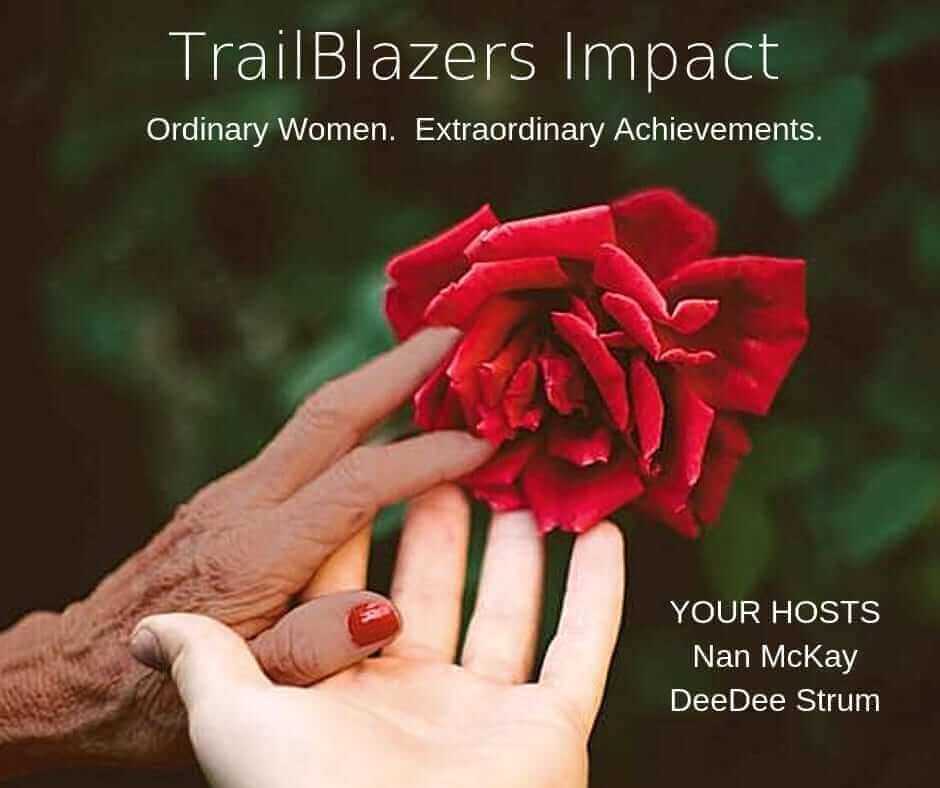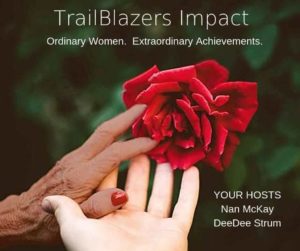
TrailBlazers Impact Podcast and YouTube channel interviews people who have made a difference in the trajectory of empowering women. Who are the people, behind the scenes, who have been the role models for others to follow? How have their struggles made them stand out?
Many of the black women we feature started out in the 1950s and 1960s when we can hardly envision what they went through to rise above the hatred and meanness to the point of danger that overtly prevailed. What did these women have in common?
One thread I have found after interviewing over 250 women is the support for education their parents had. Back in those days, women did not have the opportunities women have today, especially black women. As a woman back in those days, women had “hope chests” filled with sheets, towels, silverware, and pots and pans. Your mother’s hope for you, as a woman, was to find a man and settle down and have children. Those of us who wanted a career ahead of us were told we could be a teacher or a nurse, but the other positions were going to be filled with a man who needed to support his family.
Many families in the black community realized their hope for their children lay in education. Many families paid for that education by working in white people's homes, cleaning, doing laundry and ironing (yes, even sheets were ironed back then), and helping with the children. Minimal wages, rather than the minimum wage of today, were paid.
Most schools were not integrated. Race-based segregation clearly prevailed. The Jim Crow laws were state and local laws that enforced racial segregation in the Southern United States. Jim Crow laws were enforced until 1965. As a result of these laws, African Americans were required to sit on different park benches, use different drinking fountains, and ride in different railroad cars than their white counterparts, among other segregated aspects of life.
Wikipedia describes the reality of segregation:
“Though the Civil Rights Act of 1875 prohibited discrimination in public accommodations, in 1896 the Supreme Court ruled in the landmark case Plessy v. Ferguson that racially segregated public facilities such as schools, parks, and public transportation were legally permissible as long as they were equal in quality. This separate but equal doctrine legalized segregation in schools.
This institutionalized discrimination led to the creation of black schools — or segregated schools for African-American children. With the help of philanthropists such as Julius Rosenwald and black leaders such as Booker T. Washington, black schools began to establish themselves as esteemed institutions. These schools soon assumed prominent places in black communities, with teachers being seen as highly respected community leaders. However, despite their important role in black communities, black schools remained underfunded and ill-equipped, particularly in comparison to white schools. For example, between 1902 and 1918, the General Education Board, a philanthropic organization created to strengthen public schools in the South, gave only $2.4 million to black schools compared to $25 million given to white schools.”
This atmosphere was the norm for many of our TrailBlazers growing up. Separate was hardly equal. Therefore, when the parents of the TrailBlazers on our podcast and YouTube channel, TrailBlazers Impact Interviews, knew that education was one of the most important criteria in seeing that their children had a better life, the road ahead must have looked impossible. The difference between these women and others like them was that they did not give up and say, “Well, I don’t know what to do.” Instead, they scaped and saved toward their burning desire for a good education for their children.
This passion resulted in our TrailBlazers being able to live up to their parents' sacrifices by pursuing their education which led to their careers. The TrailBlazers did not all go in the same direction. These women had the same diversity of interests all of us had. They didn’t want to just be a teacher or a nurse either. They wanted, above all, to make their parents proud and make the sacrifices worth it.
We tell their stories on TrailBlazers Impact because we want the real stories to prevail. I think of Janice Stewart, walking down the street toward her church when the bomb in the Birmingham church went off . . . knowing that some of her friends were already inside. I think of Singleton Allison, a child of the segregated south, and daughter of the first Black state’s attorney in Maryland, who was appointed as General Counsel of the United States Agency for International Development by President Bill Clinton and served as the chief legal advisor to 72 U.S. missions around the world. I think of Fay Williams who, at 89, is still going strong with 65+ years of activism to her credit who paved the way for women to enter political office as the chair, National League of Women Voters Women’s Education Fund, traveling the country, starting in the late 1960s, to organize political campaigns, teach women how to friend-raise and fund-raise, comply with federal campaign finance laws and raise money from people they thought didn’t have any! And many, many more.
Join my co-hosts, DeeDee Strum and Donna Miller, and I to honor the sacrifices of these women and men and their parents and children, who have achieved so much!
https://TrailBlazersImpact.com/black-history

